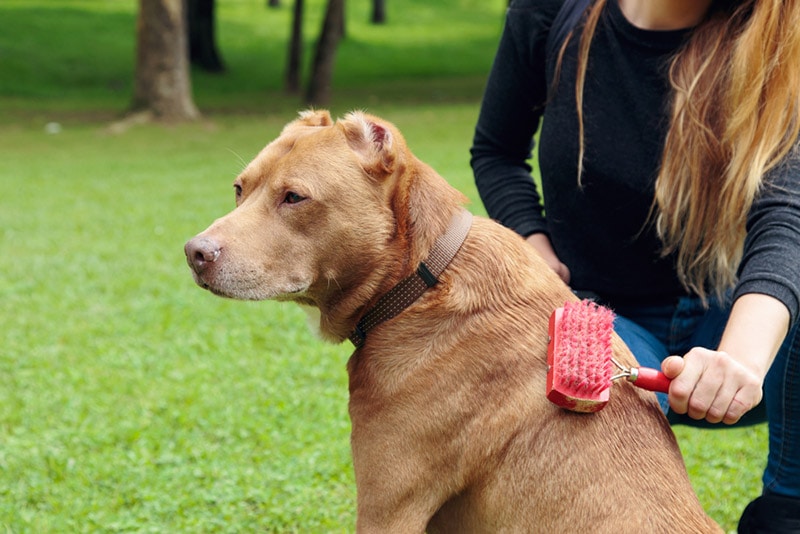What’s the Ideal Room Temperature for a Dog? What To Know!
Updated on

Our bodies do a decent job of regulating our temperature. Being mammals like us, dogs are pretty much the same. Of course, canines have the advantage when the temperature dips because of their coats. So, what temperature keeps dogs comfortable?
The ideal room temperature for a dog is usually whatever is comfortable for you. However, many variables can affect that sweet spot, making a precise figure speculative at best. Nevertheless, we can offer some practical advice for keeping your pup cozy.
Temperature Regulation in Dogs
The circulatory system helps humans and dogs regulate their body temperature. When we’re cold, blood flow moves inward and away from the extremities to protect our internal organs. It’s the same with canines. The opposite occurs when we get too warm to dissipate heat. That’s why your hands may swell if you’re walking on a hot summer day.
If it’s really warm, you’ll probably start perspiring. That’s where humans and dogs differ. Canines don’t sweat to cool themselves. Instead, they have sweat glands in their ear canals and on the pads of their paws. However, it doesn’t do much for temperature regulation, so dogs also pant to breathe out moisture and remove heat from inside the body.
Temperature Tolerance in Canines

The takeaway is that humans and canines have a limited comfort range. Your temperature doesn’t have to rise a lot before you’re running a fever. It’s the same with your pet. The normal range for your pup is between 100–102.5℉. Interestingly, newborn puppies have a significantly lower range between 95–99℉ until about 4 weeks old.
Dogs vary in their tolerance for extreme temperatures, and this often lies in the thickness of their coat. Breeds like the Chihuahua or Dachshund will have a tough time if it gets cold since their coats are so short. Likewise, a Chow Chow or Pomeranian will find hot weather challenging. Some breeds don’t like either end of the spectrum.
Brachycephalic Dogs
Brachycephalic dogs present another wrinkle to this question. The term describes pups with short snouts, such as the French Bulldog or Pug. The unusual structure of their skull and muzzle makes it more difficult for them to breathe or pant. All these dogs have some form of brachycephalic obstructive airway syndrome (BOAS) as a result. Signs of this condition include the following:
- Exercise intolerance
- Snoring
- Breathing difficulty
- Heat exhaustion
BOAS puts these animals at risk of more serious respiratory problems. These dogs are also more susceptible to the adverse effects of overly warm temperatures.
Best Practices for Keeping Your Pup Comfortable

We recommend not turning your thermostat to anything lower than 60℉ during the colder months of the year. On the flip side, turn on the air conditioner if the room temperature creeps toward 80℉. However, switch it on sooner if you notice signs of distress, like excessive panting or fatigue.
What to Do to Maintain a Dog’s Body Temperature
- Put a coat on short-haired dogs, such as Vizslas
- Keep the water bowl filled with fresh, cool water
- Maintain your dog’s weight in a healthy range
- Get your pup a heated bed
- Let the sunshine in to let your pet enjoy the warmth
What Not to Do to Maintain a Dog’s Body Temperature
- Shave a long-haired breed in the summer
- Don’t set the thermostat too high or too low when you leave
- Don’t overexert your pup, which can cause heat exhaustion
Final Thoughts
Humans and dogs aren’t too different in our desire to stay warm and cozy. Being cold is stressful, and excessive heat isn’t any better. The ideal room temperature for a dog is somewhere right in the range of what’s best for you—not too cool or not too hot. Your pup will likely let you know if it’s getting uncomfortable with its behavior. We suggest watching your pet closely for any signs that they’re feeling uneasy.
Featured Image Credit: Iryna Kalamurza, Shutterstock













